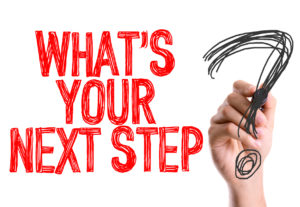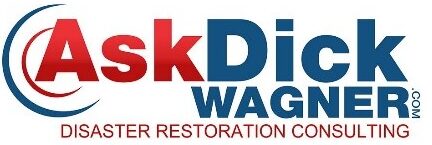Today’s prospects require a different kind of marketing approach.

When you are presenting to a prospect that does not know you, they are a “cold” prospect. Outside marketers call on these prospects because they realize the prospect has the potential to be a very good client. However, since this prospect or company is clueless about you or your company, your approach and strategy must be entirely different than if you were selling to an existing customer. These people (and companies), have both Needs (must haves) and Wants (would like to have). As a disaster restoration marketer, you must know that the pain or challenge a hotel owner might face is the potential loss of revenue from a water damage event, since guest rooms may be out of commission. A nursing home may have the pain of patients falling, or walking out of an unattended exit. Cold client sales provide unusual and unique challenges, and the following simple strategies will improve effectiveness in both novice and seasoned salespeople. A medical facility may have the “pain” of major lost revenue from a property disaster event.
Practice and Rehearse: Marketers should practice asking power questions before they make any phone calls or face-to-face visits. As I teach in my marketing classes, the preparation, presentation, and process must be repeatable, so rehearsal is vital to your success. Marketing is a process, not an event. That’s why the routine you follow must be systematized so you can duplicate it over and over. Often, the first contact with clients tends to be mostly informational, so practice your conversation starters out loud to ensure they sound as natural as possible. Find creative ways to ask open-ended questions, such as, “If you could instantly improve one area of your (disaster preparedness/maintenance, etc.), what would you change?”
Mental Preparedness: Fill your workspace with things that make you feel positive and happy (pictures of family, favorite knickknacks, etc.). Mentally prepare yourself to be resilient to rejection. Expect to be told NO. Rejection is a part of the marketing process, and a positive outlook will increase your success. If you can’t handle constant rejection and rude and disrespectful people, maybe marketing isn’t for you. Sometimes you need to remind yourself that what you have to offer may not be right for the client. I refer to this as “not being a good fit.” In fact, I suggest you even make the point with a skeptical prospect that what you have to offer “may not be a good fit for them!” This soft reverse psychology often works very well to make your prospect stop and think before they throw you out the door. In the end, create a positive routine you can perform before each sales visit, such as listening to a song that makes you feel invincible or jogging in place.

Voice Tone and Style: Successful salespeople have a ‘customer service voice. It takes time to truly master but is worth the effort since customers instantly make assumptions based on first impressions. Enlist friends and family members to practice your voice. The ideal sales voice is assured, friendly, and energetic. It is respectful, but also conversational. It’s been said that the lower your voice, the more weight it carries. Certainly, we are all blessed with a certain pitch and tone, but a concentrated effort to make it supportive, warm, and welcoming will be very helpful.
Yes, You Must Do Homework! Students in my commercial sales classes are continually reminded that they must learn everything they can about their prospect – before they make a sales visit. If you don’t know numerous key facts about the client and their industry, their challenges or headaches, then I can’t imagine how you can sell to them in a credible manner or even know how to offer a solution. For example, a typical marketer might cold visit dozens of small business owners to find new customers, (without doing any homework on them), but more thoughtful salespeople will evaluate a specific vertical market, and then learn everything they can about that vertical before approaching the prospect. The informed salesperson has credibility, and the uninformed salesperson simply proves the stereotype! Remember, you have Google, LinkedIn, Facebook, and more at your fingertips, so learning about your client and their industry isn’t difficult anymore
People Buy Based On Emotion: Customers have needs that are not being met, and typical salespeople generally never satisfy that customers’ needs. Almost everyone makes purchases based on emotion, and they justify that purchase using logic and rationalization! An effective salesperson appeals to the emotional desires to convince them, by making the customer “want” what the salesperson is offering. Storytelling is the perfect way to highlight the “pain” a client is experiencing, which increases the likelihood they will make the decision to buy. All the big brands (we see them on TV every day), use emotion to sell their products. No one really cares about the details of how Heinz Ketchup is made, but we all care about that thick, sweet, slow-dripping taste on a burger. Experts all agree, people buy based on emotion and justify the purchase with logic. Always keep the importance of the needs-emotion concept in mind when speaking with customers. It’s important to understand how the client evaluates that needs / emotional process. An example is the hotel owner certainly needs guests to stay in his rooms. That’s a financial given. However, the emotion of having a major disaster, having guest leave, or being unable to check in because rooms are not available is the emotional aspect. They will react immediately to the emotional side and then rationalize later that heads-in-beds are essential.

No Trust – No Referral: A New York Times poll found that Americans think 30% of people are trustworthy, while 70% of people they know are trustworthy. For marketers, this requires the building of a relationship with customers if the customer is going to buy. Be authentic. Take a moment to get acquainted. Ask how they are doing, and then pay attention and reply appropriately. Customers want to talk to people who are interested in them, truly hear them, and will trust the advice of salespersons they know or like. Furthermore, your visibility and exposure on social media sites like LinkedIn, where clients and associates can give you written recommendations, is extremely helpful in building trust and credibility. Best of all, you simply need to ask them for that recommendation and they’ll usually provide a great one.
Follow Through and Follow Up: Guiding the expectations is extremely vital to the next steps. Prior to the end of your cold visit, agree on a specific time to meet and speak again. Make a note about the customer for the next call, including something personal, such as an interest in football, and something professional, such as needing faster internet. The next time you talk, your customer will be pleasantly surprised that you remembered these details – increasing your credibility.
Regard if you are a new salesperson, or new to cold client sales, use these repeatable strategies to improve and enhance your career. These strategies are vital tools, and like all tools, the more you use them, the more skilled you will become.
 Author: Dick Wagner, AskDickWagner.com
Author: Dick Wagner, AskDickWagner.com
Nationally recognized restoration marketing coach, speaker, and consultant
Specializing in commercial marketing programs
